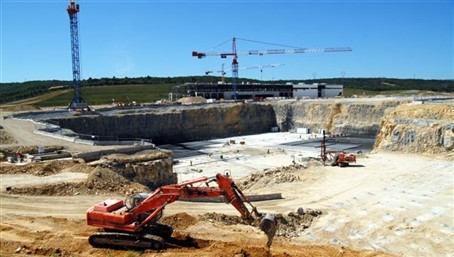Flashback of the ITER construction


To make sense of what has been achieved so far, we have decided to look back on some key moments of the ITER construction site in order to grasp the volume of progress. We are amazed to see how quickly the site has changed over the last six months with works ongoing at the Poloidal Field (PF) coils building and the Tokamak complex.
The PF coils building measures approximately 250 metres long, 45 metres wide and 17 metres high.
It will include regular building services (HVAC, electrical, piping), two large cranes (one standard crane weighing 25 tonnes, and one special crane weighing 50 tonnes), a small set of offices, a parking and two docking areas for the unloading and temporary placement of coils.
The works started in autumn last year when the first walls were erected. It was in early January though that the PF coils building became increasingly visible. In February, the steel beams were put in place serving as the structural element support to bear the load of all roofing and March found the F4E contractors dealing with the inner layer of the walls and cladding. Between April and May, the full volume of the building, where the biggest PF coils will be assembled, stood out on the ITER platform and works on antirust cladding took off together with metal sheeting and Rockwool insulation. In June, the 25 tonnes crane was installed and the cooling towers arrived on the roof top of the building.
The excavation for the Tokamak complex started in autumn last year going 20 metres deep and excavating around 200,000 m3 of rock, approximately the same volume as 43 of London’s Big Ben tower. The construction of the reinforced concrete basemat and walls forming the seismic isolation pit structure involves the casting of approximately 35,000 m3 of reinforced concrete. By February this year, the Tokamak pit got a flat surface on which the construction of the base slab on which the construction of the Tokamak, Tritium and Diagnostics buildings would begin. By March, the Tokamak excavation was completed and a steel safety mesh was installed on the rock slopes to create a safe working environment for additional soil investigation and rock joint treatment. In June, the first layer of the blinding concrete was poured and the works of steel reinforcement began.
Discover step-by-step the progress on the ITER construction site by visiting the 2010 -2011 image galleries and our multimedia section.



